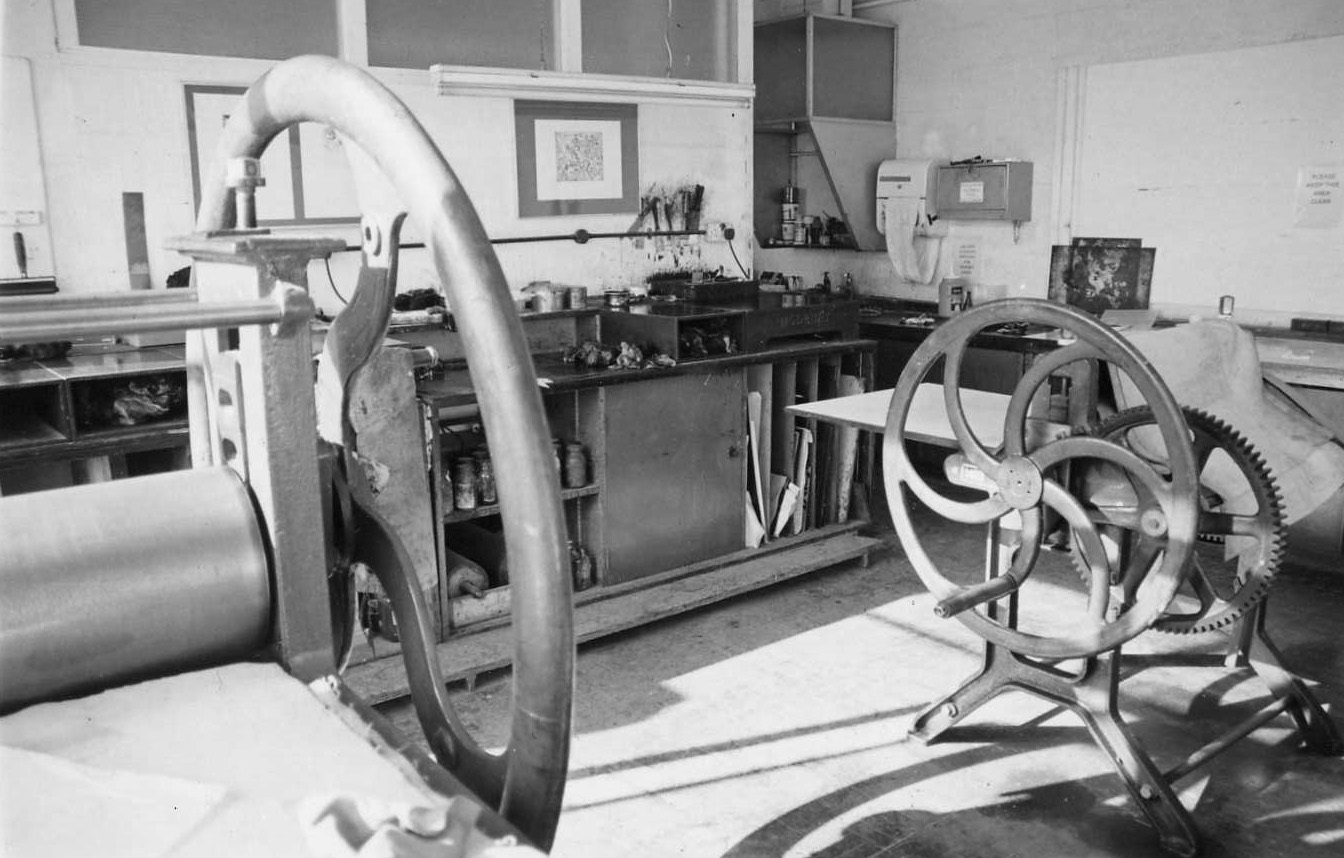Printmaking
Collecting Original Prints
& Natasha Kumar’s Works
Can I buy the original?
Natasha is a trained printmaker, her works are the original intention. Her prints are not reproductions, they are the originals.
Creating an Edition
Natasha Kumar has created limited edition original prints for over twenty-nine years.
Etchings – She draws directly by hand onto metal plates, which are then either etched or processed so that only specific parts and lines on the plate will retain ink and make an image. Once a plate is ‘inked up’, damp paper is laid on top and the plate and paper ‘sandwich’ is rolled through a print press. Each time a new print is created the plate is inked again, by Natasha. The number of times the same image is printed is an edition; the same is true of screenprints, woodcuts and lithography which involve different materials and techniques. This is a two minute video showing the etching printing process At the final stage of inking the plate Natasha will often manipulate the ink adding additional layers, like a painting to create a unique, unrepeatable colour-way.
Natasha often combines multiple layers of etching and screen print. To create the screen print she similarly draws each layer of colour in black on an acetate. Each acetate is exposed onto a mesh or fine net screen. Each colour requires one screen. It is the black / drawn area that allows the ink onto the paper beneath. The image is built up by pulling one colour a day through each screen onto the same piece of paper.
Giclée prints, are not original prints, Giclee’s are usually digital reproductions of an original artwork printed by a computer printer. Natasha does not create works printed by a computer or other digital method.
Size of the Edition
The value of a print is determined by the size of the edition, as well as by the artist’s name and quality of the work. Natasha does not usually produce editions over 25, although in printmaking an edition of 100 is common. Scarcity makes pieces more desirable. Prints of an edition of 20 are generally considered more valuable than an edition of 100. To allow for accidents in the hand processes of screen print particularly she has to create more than the intended edition.
The edition number is usually at the bottom of an artwork and written in pencil as
the number of the print / the total number of prints printed e.g 1/3.
Editions may not be numbered in the order that they are printed. Practicalities mean that the signing and number is often random. And sometimes there will be no number visible, although a certificate will confirm it is part of an edition.
For this reason, the number of a print—whether that be 1/20 or 20/20—will typically have no effect on its resale value. Each work in the edition is essentially identical – differences due to inherent quirks of the process.
Artists Proofs or A/P
Artist Proofs are usually identical to the edition prints. They are intended for the archives of the artist, or for a special collection. Artist Proofs do not exceed a total of 10 percent of the edition amount, and can be actively sought for rarity.
Colour Proofs C/ P are usually a specific colour trial.
State Proofs are proofs taken during the creation of a edition. Very rarely, Natasha will make two or three prints of the artwork at that particular stage. These are specifically noted as State Proof 1/2 .
Buying Prints
Limited edition prints usually retain their value, and may increase in value, depending on the individual artist.
Galleries, and artists like Natasha Kumar, will gradually increase the price of a print in an edition as it progressively sells out, and prints become scarcer.
Collectors are registered with her, informed in time to take advantage of new editions at the earliest, and lowest price.
Be the first to know – sign up here.


